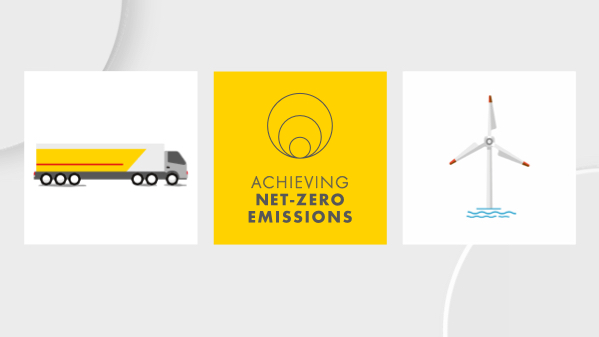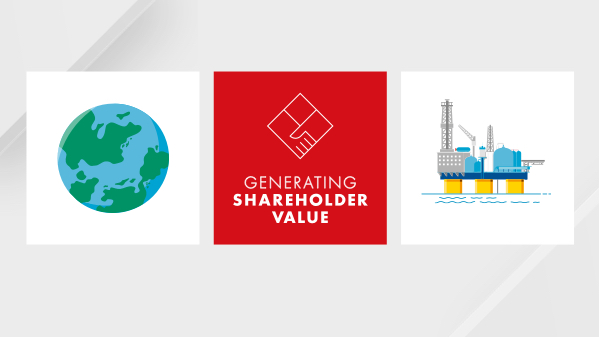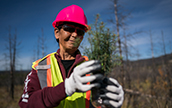Chart generator
|
Unit |
2021 |
2020 |
2019 |
2018 |
2017 |
||||||||||||||||||||||||||||||||
|---|---|---|---|---|---|---|---|---|---|---|---|---|---|---|---|---|---|---|---|---|---|---|---|---|---|---|---|---|---|---|---|---|---|---|---|---|---|---|
Greenhouse gas (GHG) emissions |
|
|
|
|
|
|
||||||||||||||||||||||||||||||||
Scope 1 [A] |
million tonnes CO2e |
60 |
63 |
70 |
71 |
73 |
||||||||||||||||||||||||||||||||
Scope 2 [B] |
million tonnes CO2e |
8 |
8 |
10 |
11 |
12 |
||||||||||||||||||||||||||||||||
Net carbon intensity |
|
|
|
|
|
|
||||||||||||||||||||||||||||||||
Net carbon intensity [C] |
gCO2e/MJ |
77 |
75 |
78 |
79 |
79 |
||||||||||||||||||||||||||||||||
Direct GHG emissions (Scope 1) |
|
|
|
|
|
|
||||||||||||||||||||||||||||||||
Carbon dioxide (CO2) |
million tonnes |
58 |
61 |
67 |
69 |
70 |
||||||||||||||||||||||||||||||||
Methane (CH4) |
thousand tonnes |
55 |
67 |
91 |
92 |
123 |
||||||||||||||||||||||||||||||||
Nitrous oxide (N2O) |
thousand tonnes |
1 |
1 |
1 |
1 |
1 |
||||||||||||||||||||||||||||||||
Hydrofluorocarbons (HFCs) |
tonnes |
25 |
30 |
29 |
31 |
22 |
||||||||||||||||||||||||||||||||
Upstream flaring [D] |
|
|
|
|
|
|
||||||||||||||||||||||||||||||||
GHG emissions from flaring |
million tonnes CO2e |
4.5 |
3.8 |
5.9 |
5.2 |
8.2 |
||||||||||||||||||||||||||||||||
Total hydrocarbons flared |
million tonnes |
1.3 |
1.1 |
1.8 |
1.5 |
2.5 |
||||||||||||||||||||||||||||||||
Nigeria |
million tonnes |
0.8 |
0.6 |
0.7 |
0.6 |
0.8 |
||||||||||||||||||||||||||||||||
Rest of the world |
million tonnes |
0.4 |
0.5 |
1.2 |
1.0 |
1.7 |
||||||||||||||||||||||||||||||||
Energy intensity [E] |
|
|
|
|
|
|
||||||||||||||||||||||||||||||||
Upstream excl. oil sands, LNG and GTL |
GJ/ tonne production |
1.14 |
1.15 |
1.07 |
1.06 |
1.05 |
||||||||||||||||||||||||||||||||
Refineries: Refinery Energy Index [F] |
Index |
96.9 |
96.1 |
94.2 |
94.3 |
94.8 |
||||||||||||||||||||||||||||||||
Chemical plants: chemicals energy intensity |
GJ/ tonne production |
18.1 |
18.7 |
19.4 |
18.3 |
17.6 |
||||||||||||||||||||||||||||||||
Acid gases and VOCs [G] |
|
|
|
|
|
|
||||||||||||||||||||||||||||||||
Sulphur oxides (SOx) |
Thousand tonnes |
32 |
36 |
65 |
74 |
81 |
||||||||||||||||||||||||||||||||
Nitrogen oxides (NOx) |
Thousand tonnes |
105 |
118 |
108 |
111 |
107 |
||||||||||||||||||||||||||||||||
Volatile organic compounds (VOCs) |
Thousand tonnes |
45 |
47 |
55 |
59 |
95 |
||||||||||||||||||||||||||||||||
Ozone-depleting emissions |
|
|
|
|
|
|
||||||||||||||||||||||||||||||||
CFCs/halons/trichloroethane |
Tonnes |
0.0 |
0.0 |
0.0 |
0.0 |
0.0 |
||||||||||||||||||||||||||||||||
Hydrochlorofluorocarbons (HCFCs) |
Tonnes |
2 |
6 |
8 |
9 |
7 |
||||||||||||||||||||||||||||||||
Spills – number [H] |
|
|
|
|
|
|
||||||||||||||||||||||||||||||||
Sabotage spills [I] |
Number |
106 |
122 |
156 |
109 |
62 |
||||||||||||||||||||||||||||||||
Operational spills – total [J] |
Number |
41 |
70 |
68 |
93 |
102 |
||||||||||||||||||||||||||||||||
Nigeria [K] |
Number |
9 |
12 |
8 |
15 |
10 |
||||||||||||||||||||||||||||||||
Rest of the world |
Number |
32 |
58 |
60 |
78 |
92 |
||||||||||||||||||||||||||||||||
Hurricane spills [L] |
Number |
2 |
0 |
0 |
0 |
4 |
||||||||||||||||||||||||||||||||
Spills – volume [H] |
|
|
|
|
|
|
||||||||||||||||||||||||||||||||
Sabotage spills [M] |
Thousand tonnes |
3.3 |
1.5 |
2.3 |
1.8 |
1.4 |
||||||||||||||||||||||||||||||||
Operational spills - total |
Thousand tonnes |
0.05 |
0.4 |
0.2 |
0.9 |
0.4 |
||||||||||||||||||||||||||||||||
Nigeria [N] |
Thousand tonnes |
0.03 |
0.03 |
0.03 |
0.4 |
0.1 |
||||||||||||||||||||||||||||||||
Rest of the world |
Thousand tonnes |
0.02 |
0.4 |
0.2 |
0.5 |
0.3 |
||||||||||||||||||||||||||||||||
Hurricane spills [L] |
Thousand tonnes |
0.03 |
0 |
0 |
0 |
0.3 |
||||||||||||||||||||||||||||||||
Oil in effluents to surface environment |
|
|
|
|
|
|
||||||||||||||||||||||||||||||||
Oil in effluents to surface environment |
Thousand tonnes |
1.0 |
1.4 |
1.3 |
1.4 |
1.2 |
||||||||||||||||||||||||||||||||
Water use and discharge [O] |
|
|
|
|
|
|
||||||||||||||||||||||||||||||||
Fresh water withdrawn |
Million cubic metres |
166 |
171 |
192 |
199 |
204 |
||||||||||||||||||||||||||||||||
Fresh water consumed |
Million cubic metres |
122 |
127 |
145 |
147 |
154 |
||||||||||||||||||||||||||||||||
Waste [P] |
|
|
|
|
|
|
||||||||||||||||||||||||||||||||
Total waste |
Thousand tonnes |
1,993 |
2,049 |
2,113 |
1,999 |
2,020 |
||||||||||||||||||||||||||||||||
Hazardous waste disposed |
Thousand tonnes |
1,025 |
558 |
698 |
592 |
638 |
||||||||||||||||||||||||||||||||
Non-hazardous waste disposed |
Thousand tonnes |
969 |
1,491 |
1,414 |
1,407 |
1,382 |
||||||||||||||||||||||||||||||||
|
||||||||||||||||||||||||||||||||||||||
|
Unit |
2021 |
2020 |
2019 |
2018 |
2017 |
||||||||||
|---|---|---|---|---|---|---|---|---|---|---|---|---|---|---|---|---|
Gender diversity [A] |
|
|
|
|
|
|
||||||||||
In Supervisory/professional positions (% women) |
% women |
34.3 |
33.1 |
30.8 |
29.9 |
29.1 |
||||||||||
In Management positions (% women) |
% women |
27.2 |
25.5 |
24.5 |
23.7 |
22.3 |
||||||||||
In Senior leadership positions (% women) |
% women |
29.5 |
27.8 |
26.4 |
24.0 |
22.2 |
||||||||||
Staff forums and grievance procedures |
|
|
|
|
|
|
||||||||||
Countries with staff access to staff forum, grievance procedure or other support system |
% countries |
100 |
100 |
100 |
100 |
100 |
||||||||||
Procedures to prevent child labour |
|
|
|
|
|
|
||||||||||
Own operations |
% countries with procedures in place |
100 |
100 |
100 |
100 |
100 |
||||||||||
Contractors and suppliers |
% countries with procedures in place |
100 |
100 |
100 |
100 |
100 |
||||||||||
Procedures to prevent forced labour |
|
|
|
|
|
|
||||||||||
Own operations |
% countries with procedures in place |
100 |
100 |
100 |
100 |
100 |
||||||||||
Contractors and suppliers |
% countries with procedures in place |
100 |
100 |
100 |
100 |
100 |
||||||||||
Integrity |
|
|
|
|
|
|
||||||||||
Code of Conduct violations [B] |
number |
181 |
216 |
263 |
370 |
261 |
||||||||||
Contracting and procurement |
|
|
|
|
|
|
||||||||||
Estimated expenditure on goods and services in lower-income countries [C] |
$ billion |
4.2 |
4.5 |
5.7 |
4.1 |
4.9 |
||||||||||
Social investment [D] |
|
|
|
|
|
|
||||||||||
Estimated voluntary social investment (equity share) |
$ million |
94 |
156 |
116 |
113 |
111 |
||||||||||
Estimated social investment spend (equity share) in lower-income countries [E] |
$ million |
72 |
87 |
84 |
102 |
107 |
||||||||||
|
||||||||||||||||
|
Unit |
2021 |
2020 |
2019 |
2018 |
2017 |
||||||||||||
|---|---|---|---|---|---|---|---|---|---|---|---|---|---|---|---|---|---|---|
Fatalities [A] |
|
|
|
|
|
|
||||||||||||
Employees |
Number |
0 |
0 |
3 |
0 |
0 |
||||||||||||
Contractors |
Number |
8 |
0 |
4 |
2 |
2 |
||||||||||||
Total number |
Number |
8 |
0 |
7 |
2 |
2 |
||||||||||||
Fatal accident rate |
|
|
|
|
|
|
||||||||||||
Employees |
Number per 100 million hours |
0.0 |
0.0 |
1.6 |
0.0 |
0.0 |
||||||||||||
Contractors |
Number per 100 million hours |
2.9 |
0.0 |
1.2 |
0.6 |
0.6 |
||||||||||||
Injuries |
|
|
|
|
|
|
||||||||||||
Total recordable case frequency (TRCF) |
Number per million hours |
0.9 |
0.7 |
0.9 |
0.9 |
0.8 |
||||||||||||
Lost time injury frequency (LTIF) |
Number per million hours |
0.3 |
0.2 |
0.3 |
0.3 |
0.2 |
||||||||||||
Road transport safety performance [B] |
|
|
|
|
|
|
||||||||||||
Severe motor vehicle incident frequency rate [C] |
Number of severe motor vehicle incidents per 100 million kilometres driven |
1.7 |
2.1 |
3.5 |
3.1 |
2.5 |
||||||||||||
Number of road-transport-related fatalities (employees and contractors) |
Number |
0 |
0 |
2 |
0 |
1 |
||||||||||||
Operational process safety events [D] |
|
|
|
|
|
|
||||||||||||
Tier 1 |
Number |
38 |
34 |
41 |
35 |
49 |
||||||||||||
Tier 2 |
Number |
64 |
69 |
89 |
86 |
117 |
||||||||||||
Illnesses |
|
|
|
|
|
|
||||||||||||
Total recordable occupational illness frequency (TROIF) (employees only) [E] |
Number per million hours |
0.4 |
0.2 |
0.5 |
0.4 |
0.3 |
||||||||||||
Security [F] |
|
|
|
|
|
|
||||||||||||
Using armed security |
% of countries |
14 |
14 |
20 |
21 |
14 |
||||||||||||
Using armed company security |
% of countries |
3 |
1 |
1 |
3 |
1 |
||||||||||||
Using armed contractor security |
% of countries |
8 |
8 |
11 |
10 |
3 |
||||||||||||
|
||||||||||||||||||








